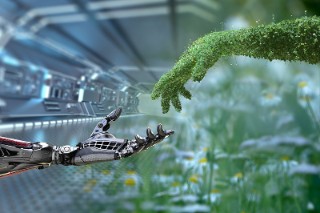In this overview, you will find detailed information about our research and development projects that we carry out together with industry or with partners from the scientific community.
We receive funding, for example, from the European Union, from various german federal ministries, as well as from state ministries in North Rhine-Westphalia. In this context, we work closely with major german research funding institutions. You can also find projects that we are working on within internal programs of the Fraunhofer-Gesellschaft or in the context of industrial cooperations.
For your search, you can select any search terms and limit the search period to the duration of the projects. Our respective contact persons will be happy to provide you with further information.
In the research project "LEDA – Extending the service life of railway wheels through wire-based metal deposition," the Fraunhofer IPT is developing an innovative process chain for the repair of railway wheels together with project partners. Since it uses additive manufacturing technologies selectively, this process chain is significantly more economically and ecologically efficient than conventional methods.
more info